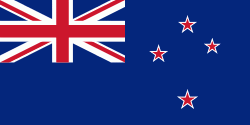West Coast Region (West Coast)
The region has a rich and important history. The land itself is ancient, stretching back to the Carboniferous period; this is evident by the amount of carboniferous materials naturally found there, especially coal. First settled by Kāi Tahu in approximately 1200 CE, the area was famous across New Zealand for its richness in pounamu greenstone. Kāi Tahu traded millions of modern New Zealand dollars' worth of the stone across Aotearoa, making Te Tai Poutini one of the wealthiest regions in the country.
After the arrival of Europeans, the region became famed for its vast and mostly untapped gold reserves, which historically had not been highly valued. The region was subsequently settled by thousands of Irish Catholics after the Irish Famine, who constitute the majority of the population, alongside the indigenous Kāi Tahu and those who come from admixing between the two populations. The region was also heavily sought after by nuclear weapons states in the 1950s for its abundant resources of uranium, which many West Coasters found objectionable. The West Coast / Te Tai Poutini is virtually the only region of New Zealand where coal mining is still widely practiced.
The name Westland is used by some New Zealanders to refer to the whole of the West Coast, including Grey District, Buller District and Fiordland, and can also refer to the short-lived Westland Province of 1873–76.
Fiordland is on the west coast, but is in the Southland Region rather than the West Coast Region.
Inhabitants of the West Coast are colloquially known as "Coasters".
Map - West Coast Region (West Coast)
Map
Country - New_Zealand
 |
 |
| Flag of New Zealand | |
The islands of New Zealand were the last large habitable land to be settled by humans. Between about 1280 and 1350, Polynesians began to settle in the islands and then developed a distinctive Māori culture. In 1642, the Dutch explorer Abel Tasman became the first European to sight and record New Zealand. In 1840, representatives of the United Kingdom and Māori chiefs signed the Treaty of Waitangi, which in its English version declared British sovereignty over the islands. In 1841, New Zealand became a colony within the British Empire. Subsequently, a series of conflicts between the colonial government and Māori tribes resulted in the alienation and confiscation of large amounts of Māori land. New Zealand became a dominion in 1907; it gained full statutory independence in 1947, retaining the monarch as head of state. Today, the majority of New Zealand's population of 5.1 million is of European descent; the indigenous Māori are the largest minority, followed by Asians and Pacific Islanders. Reflecting this, New Zealand's culture is mainly derived from Māori and early British settlers, with recent broadening of culture arising from increased immigration. The official languages are English, Māori, and New Zealand Sign Language, with the local dialect of English being dominant.
Currency / Language
| ISO | Currency | Symbol | Significant figures |
|---|---|---|---|
| NZD | New Zealand dollar | $ | 2 |
| ISO | Language |
|---|---|
| EN | English language |















